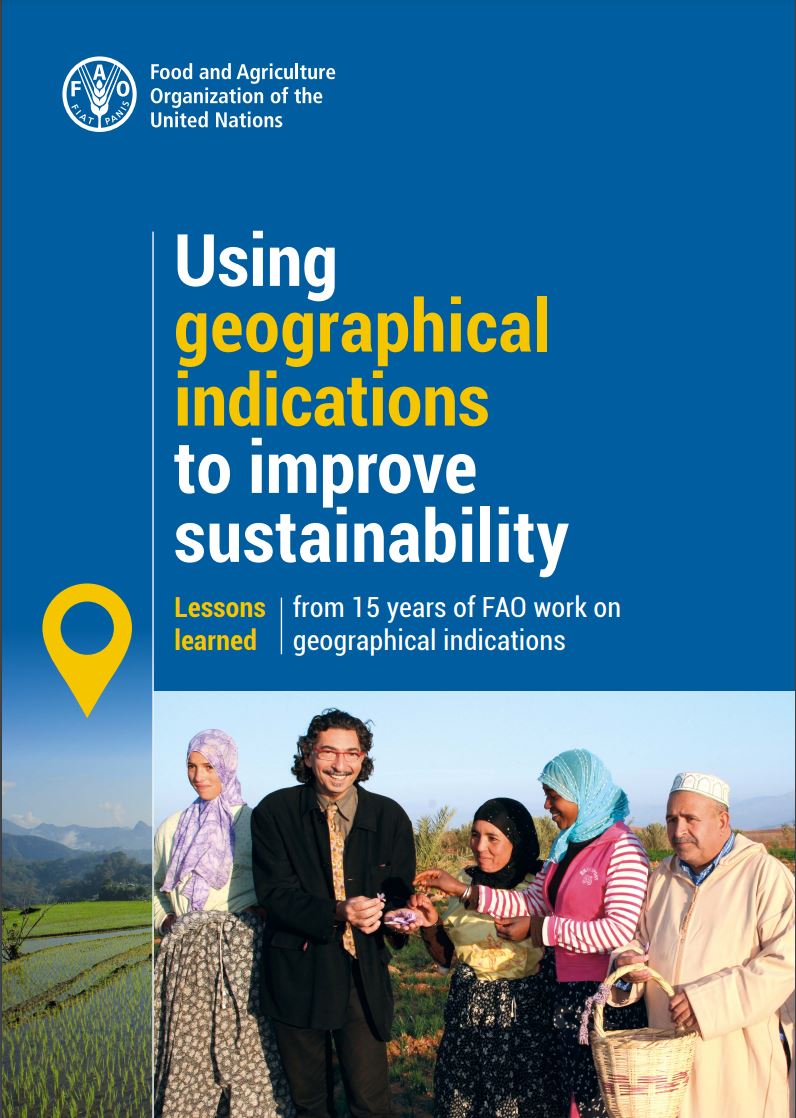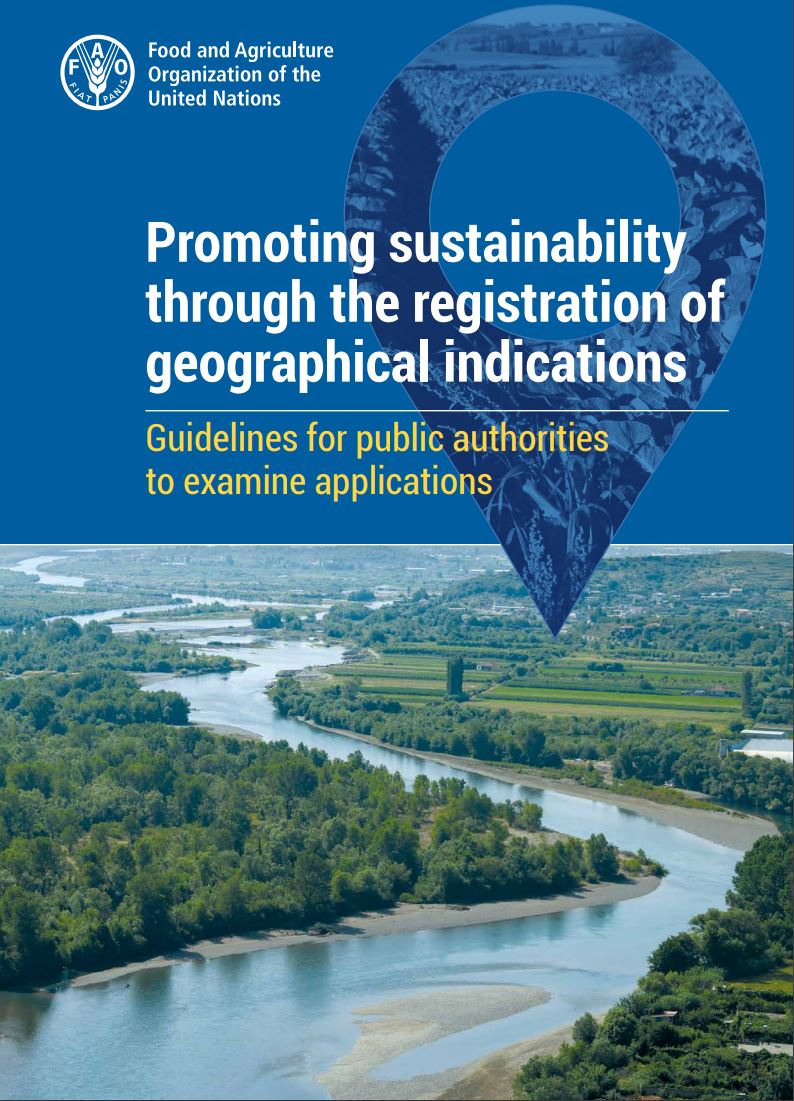WHAT ARE GEOGRAPHICAL INDICATIONS?
A Geographical Indication (GI) is a sign used on goods that have a specific geographical origin and possess qualities or a reputation that are due to that origin. Most commonly, a GI consists of the name of the place of origin. The specific qualities involved are the result of local natural or human factors. GIs thus represent a collective asset linked to the local heritage and reputation. GIs are protected by intellectual property rights, in accordance with the World Trade Organization’s Agreement on Trade-Related Aspects of Intellectual Property Rights (TRIPS) and the Geneva Act of the Lisbon Agreement on Appellations of Origin and Geographical Indications.FAO’s ROLE
FAO’s work on GIs helps unleash their potential for sustainable development and sustainable agrifood systems, in partnership with international organizations, countries, local authorities, communities and researchers.
NEWS
Fifth Regional Consultation on Geographical Indications with a focus on sustainability - 20 November 2025
04/12/2025
The Food and Agriculture Organization of the United Nations (FAO) brought together national and European organizations, producer associations, civil society and international experts for the Fifth Regional Consultation on Geographical Indications (GIs). This year’s event was dedicated to advancing the economic, environmental and social sustainability of GI systems in Europe and Central Asia. Geographical indications – quality labels that connect agricultural and food products to their place of origin – are increasingly recognized as powerful tools for rural development, the preservation of traditions and helping products stand out in the marketplace. Over the past decade, FAO has worked with countries across the region to strengthen legal frameworks, improve governance and raise awareness of the value of origin-linked quality products.
oriGIn Biennial Meeting 2025, Morelia (Mexico), 8-10 October
18/10/2025
The oriGIn Biennial Meeting 2025, organized in Morelia, Michoacán (Mexico) from 8 to 10 October, gathered over 650 participants from 35 countries to discuss Geographical Indications (GIs), with a strong focus on artisanal GIs and producer groups in Latin America. High-level participation included WIPO, EUIPO, OAPI and the Mexican Intellectual Property Office. The Food and Agriculture Organization of the United Nations (FAO) played a central role by moderating the panel on the GI Agenda 2030, presenting its work on sustainable GI systems and engaging with GI groups and public authorities. FAO’s participation highlighted its commitment to international cooperation and sustainable development through origin-based quality schemes.
Forum Origin, Diversity and Territories 2025 - Role of origin-linked labels for the agroecological transition, in particular in mountain areas
18/11/2025
More than sixty specialists from 25 countries gathered from 12 to 14 November 2025 in Bramois (Switzerland) at the Forum Origin, Diversity and Territories 2025 to examine how Geographical Indications (GIs) and other origin-linked labels can advance the agroecological transition in mountain areas. The Food and Agriculture Organization of the United Nations (FAO) played a key role, moderating a workshop on GI sustainability, presenting during the plenary synthesis, and contributing to the Forum’s policy guidance document. Through its active participation, FAO reiterated its continued commitment to promoting sustainable territorial development and origin-based approaches to climate resilience in mountain systems.
Celebrate FAO’s 80th anniversary by finding out more about FAO’s work on Geographical Indications
16/10/2025
Geographical Indications (GIs) are products made in a specific area using distinctive traditional know-how, such as Parmigiano Reggiano cheese from Emilia Romagna region of Italy. There are almost 9,500 registered products worldwide. The Food and Agriculture Organization of the United Nations (FAO) sees GIs as key tools for sustainable development. They support local value creation, youth employment and gender equality. They also raise farmers’ incomes, protect cultural heritage and help conserve biodiversity. FAO supports countries in developing GI systems through legislative, technical and scientific assistance and cooperation.
NEW PUBLICATIONS
Based on a 2022 international event organized by the Food and Agriculture Organization (FAO), the Centre de coopération internationale en recherche agronomique pour le développement (CIRAD), in collaboration with the Swiss Intellectual Property Institute (IPI) and oriGIn (Organization for an International GI Network), this book explores global perspectives on Geographical Indications (GIs), featuring contributions from researchers, policymakers, and practitioners. It covers GI legal frameworks, management, market dynamics, sustainability, and consumer welfare, highlighting their role in linking product quality and reputation to geographic origin.
DEVELOPING A ROADMAP TOWARDS INCREASED SUSTAINABILITY IN GEOGRAPHICAL INDICATION SYSTEMS
This guide and the associated toolkit provide GI organizations with practical step-by-step guidance to develop and implement their own sustainability roadmaps, based on participatory processes.
Through these processes, GI organizations can strengthen their governance and legitimacy and become agents of change for increased sustainability.
USING GEOGRAPHICAL INDICATIONS TO IMPROVE SUSTAINABILITY
This brief, now available also in French, presents best practices and lessons learned drawn from the implementation of a comprehensive approach to GIs for over 10 years.
The policy guidance provided highlights the importance of endogenous interventions that put local producers at the centre of geographical indication processes, as well as the need for public institutions to play a key role in the implementation of geographical indication approaches.
PROMOTING SUSTAINABILITY THROUGH THE REGISTRATION OF GEOGRAPHICAL INDICATIONS
This publication provides guidance for public authorities in examining requests for the registration of geographical indications.
The publication highlights the importance of public institutions to support the creation of enabling environments that contribute to the development of sustainable agrifood systems through geographical indication approaches.
HIGHLIGHTED PUBLICATIONS
KEY FACTS
GIs IN THE WORLD:
Asia: 4 043
Africa: 209
Central/South America: 572
North America: 429
Europe: 4 051
Oceania: 138
World: 9 460
(oriGIn)
PAST EVENTS
Geographical indications discussed during the G7 Ministers' Meeting on Agriculture held in September 2024.
Role and Contribution of Geographical Indications and WIPO Lisbon System ─ Boao Forum for Asia Global Urban & Rural Development Forum (GURD), 2024. On this occasion FAO presented its role in the development of GIs and its approach to sustainability.
International colloquium and trade fair on GIs in Africa, 2024. The event brought together representatives of almost 30 countries, whose GI products were represented at the colloquium. The work of FAO in support of GIs in Africa was presented during the event.
RELATED LINKS







